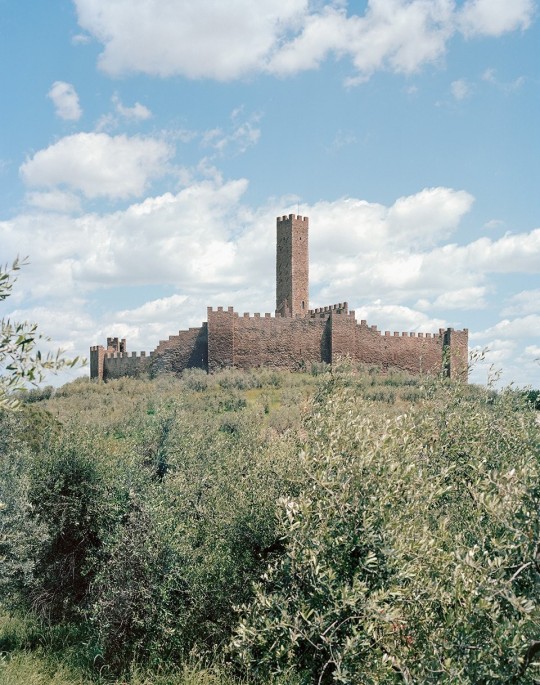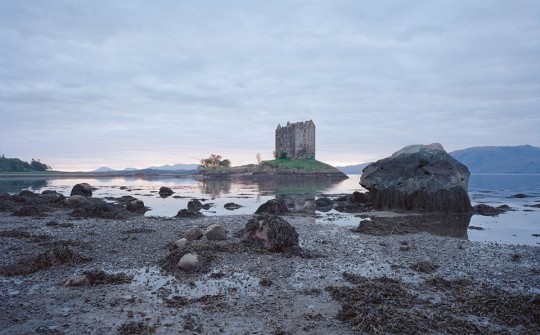#Frédéric Chaubin
Text
I don't know why, but I love this picture.

Druzhba Holiday Center, Yalta – 1984. Picture by Frédéric Chaubin.
17 notes
·
View notes
Photo
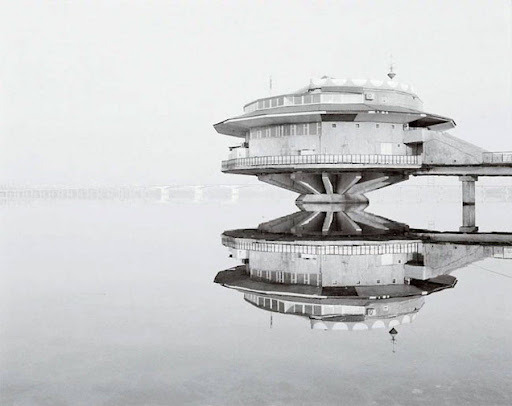
Het Poplakov Cafe
31 notes
·
View notes
Photo

A Soviet’s take on modernist architecture: the Druzhba Sanatorium in Yalta, Crimea (Ukraine). Designed by architect Igor Vasilevsky and Yuriy Stefanchuk in the 80s.
Photographed by Frédéric Chaubin, who published a recommended book about communist architecture.
#architecture#soviet#brutalism#modernism#Druzhba#sanatorium#Yalta#Crimea#Ukraine#Igor Vasilevsky#design#hotel#beach#concrete#structure#Frédéric Chaubin
124 notes
·
View notes
Photo

Frédéric Chaubin, Rocca Calascio, Abruzzo, Italy
3 notes
·
View notes
Photo

Frédéric Chaubin. The Fyodor Dostoevsky Theater of Dramatic Art , Veliky Novgorod, Russian Federation. Architect: Vladimir Somov, 1987.
Source
#frédéric chaubin#fyodor dostoevsky theater of dramatic art#veliky novgorod#russian federation#vladimir somov
34 notes
·
View notes
Photo
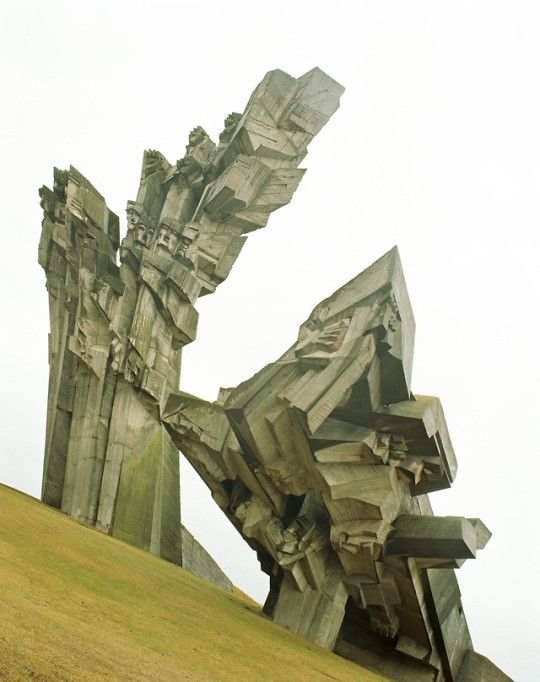
A monument at the Ninth Fort in Kaunas, Lithuania. After the Nazi occupation of that nation, political prisoners were held there before being sent to labor lamps.
Photo, by Frédéric Chaubin (from his the book, “Cosmic Communist Constructions Photographed.”)
9 notes
·
View notes
Text
No sólo ruinas bonitas. Márgenes borrosos de la investigación de la arquitectura socialista | Jelena Prokopljević
El patrimonio construido de la época socialista de los diferentes países de Europa oriental y Asia constituye una parte muy importante de su patrimonio arquitectónico. Se trata de un periodo de entre 45 y 70 años aproximadamente, aunque el proceso de transición en algunos casos ha sido lento y difícil en cuanto a las instituciones relacionadas con planificación y construcción, así que este límite es sólo orientativo. Por supuesto, hay países como Corea del Norte o Cuba que aun funcionan bajo las reglas de la economía estatal, planificación centralizada y el partido único en el poder. El primer límite borroso de la arquitectura socialista se refiere a su final: cuándo ha dejado de existir como tal, como forma concebida para un uso determinado. Una solución conceptual ofrece el libro “Socialist Architecture: The Vanishing act” de Srdjan Jovanović Weiss y Armin Linke.
[...]
Jelena Prokopljević. Doctora Arquitecta.
Barcelona. Febrero 2015.
#arquitectura comunista#arquitectura rusa#arquitectura social#arquitectura socialista#Frédéric Chaubin#integración social#Jan Kampenaers#Jelena Prokopljević#política social#social#socialismo#vivienda social#Wim Wenders
0 notes
Photo

Hotel Amanauz, Dombay, Russia.
Architect: G. Perchenko / Evsey Kostomarov
Photographer: Frédéric Chaubin
From 'Cosmic Communist Constructions Photographed'
278 notes
·
View notes
Photo
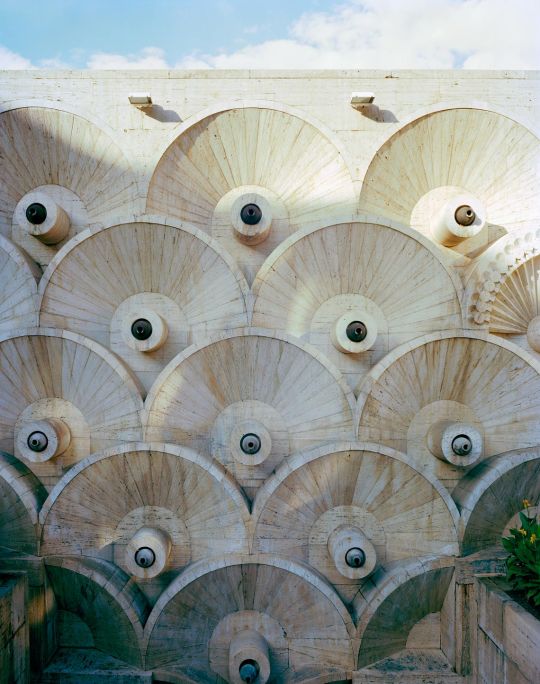


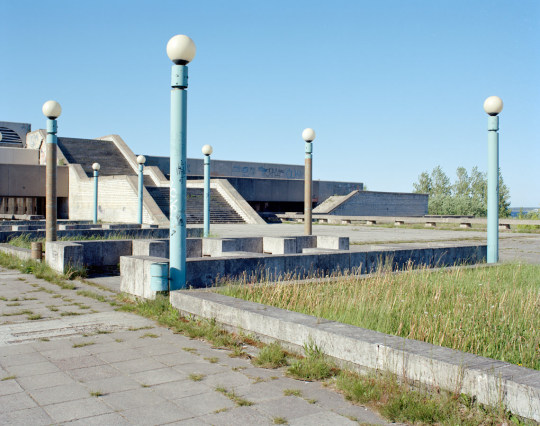

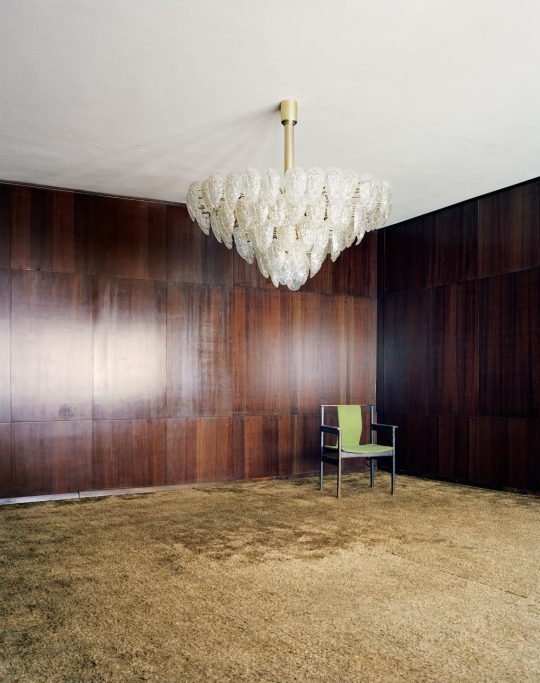

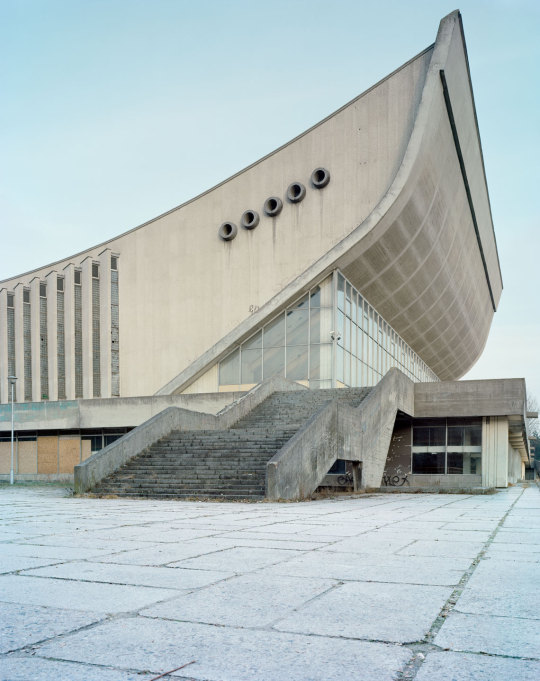

do precioso trabalho de documentação da arquitetura russa de frédéric chaubin
8 notes
·
View notes
Text

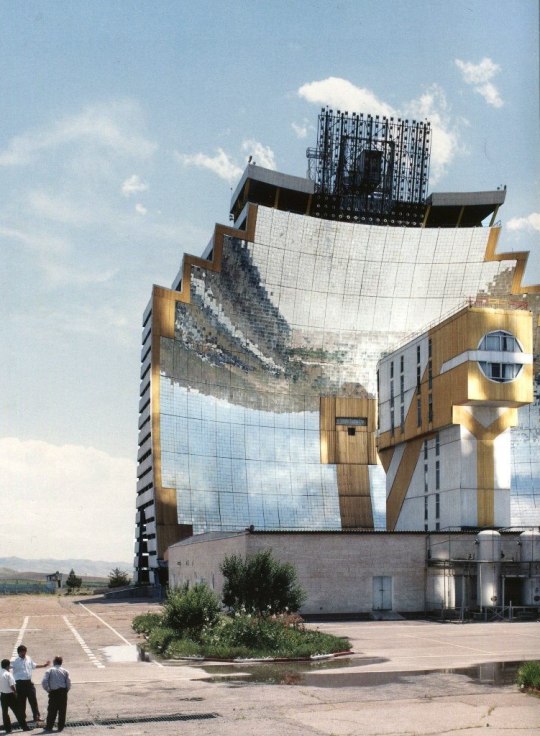
المجمع الشمسي "شمس"
المهندسين المعماريين: V. Zakharov ، O. Taushkanov
باركنت، أوزبكستان
سنوات البناء: بين عامي 1981 - 1987
الصورة: فريديريك تشوبين Frédéric Chaubin
12 notes
·
View notes
Text
Photographers: Roberto Conte
The collaboration with photographers creates Architcetuul’s catalogue with amazing photo material from all over the world. Find out more about architectural photographers and their work on our Pinterest Boards? This first edition is dedicated to Roberto Conte, who already contributed his Concrete Patterns.
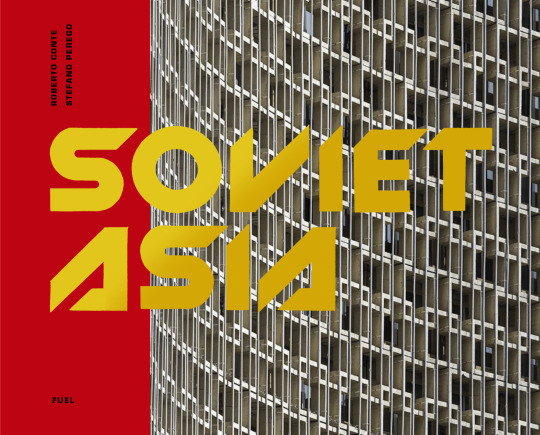
Together with Stefano Perego they just published Soviet Asia: Soviet Modernist Architecture in Central Asia in which they present material from the former Soviet republics of Kazakhstan, Kyrgyzstan, Uzbekistan and Tajikistan, documenting buildings constructed from the 1950s until the fall of the USSR. In this occasion we talked with Roberto.

The Unité d'Habitation or Cité Radieuse by Le Corbusier (1947-1952) in Marseille, France. | © Roberto Conte (2017)
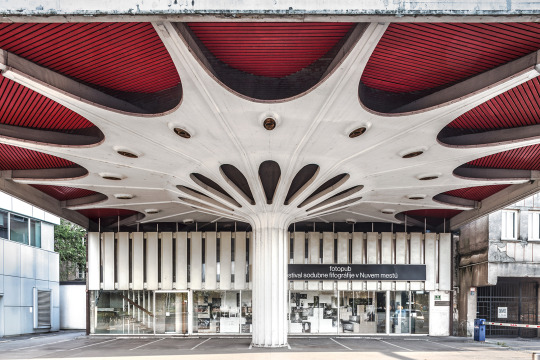
Petrol station by Milan Mihelič (1968) in Ljubljana, Slovenia. | Photo © Roberto Conte (2017)
What is the role of photography in architecture?
Architects have always been very careful about the way their buildings were photographed. Not everyone has the possibility or the privilege to experience architecture. Sometimes a photo is the only way to have a sensorial relation with the object. Because of the digital render aesthetic, we often don't experience what was actually built.

Tower of Shadows by Le Corbusier (1957) in Chandigarh, India. | Photo © Roberto Conte (2019)

From Moscow, Russia. | Photo © Roberto Conte (2017)

An abandoned historical Innocenti Maserati plant in Milan, Italy. | Photo © Roberto Conte (2018)
How do you work; which is your approach?
I start with a research of information and a customer’s brief about the project. I also pay attention on time checking for best natural lights on the site with digital maps and specific software. I tend to explore around location often knocking at the doors of nearby houses to have specific views on the matter. Regarding the images results, I always try to give a good representation of the structure itself from an analytical point of view, showcasing the project features, as well as trying to trigger emotions as surprise or interest.

Brion Vega Cemetery by Carlo Scarpa (1972) in San Vito d'Altivole/ Treviso, Italy. | Photo © Roberto Conte (2018)

Memorial Park by Bogdan Bogdanović (1978-1981) in Popina, Serbia. | Photo © Roberto Conte (2017)

Church of St. John the Baptist by Dominikus Böhm (1922-1926) in Neu-Ulm, Germany. | Photo © Roberto Conte (2016)
What are the difficulties?
Mostly are related to light management, points of view restraints as well as site condition, when there are objects that impact too much on the site or hide the building. Some buildings are difficult to be photographed in Spring or Summer because they are surrounded by trees or some facades are pointing towards the North. In strong sunny days that makes difficult to get a good picture.

St. John the Baptist’s church by Mario Botta (project 1986-1992, construction 1996-98) in Mogno, Switzerland. | Photo © Roberto Conte (2016)

The Michigan Central Station by Warren & Wetmore and Reed and Stem (1914) in Detroit, Michigan USA. | Photo © Roberto Conte (2018)
What is your inspiration?
One of my main sources is definitely Gabriele Basilico, followed by Bernd and Hilla Becher, Andreas Gursky, Edward Burtynsky and Frédéric Chaubin.
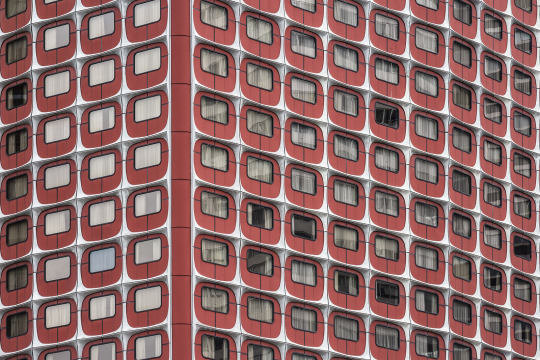
Hotel Novotel Paris Tour Eiffel by Julien Penven and Jean-Claude Le Bail (1976) in Paris, France. | Photo © Roberto Conte (2017)
Roberto Conte is based in Milano, Italy.
Il Conte Photography | Facebook | Instagram
191 notes
·
View notes
Photo

In his book Cosmic Communist Constructions Photographed, Frédéric Chaubin documents 90 buildings in 14 former-USSR republics belonging to what he calls the ‘fourth age’ of Soviet architecture.
They reveal an unexpected rebirth of imagination, a burgeoning that took place from 1970 until 1990 and in which, contrary to the 20s and 30s, no ‘school’ or main trend emerges.
2 notes
·
View notes
Text

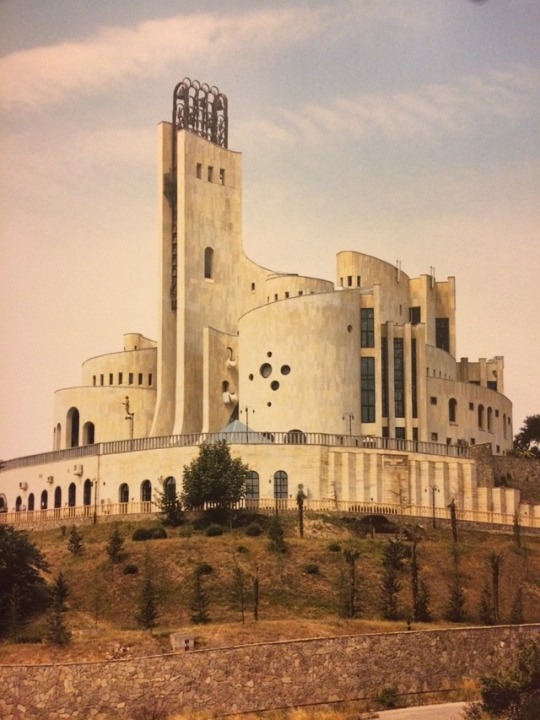
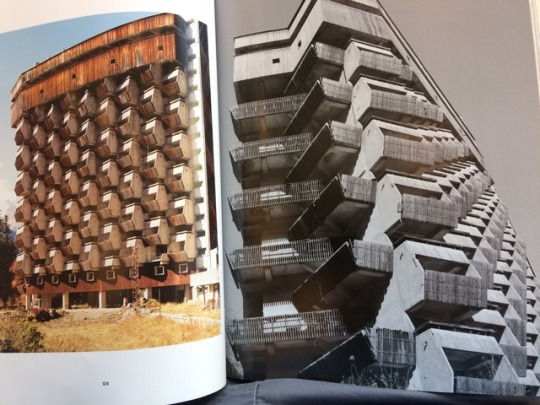



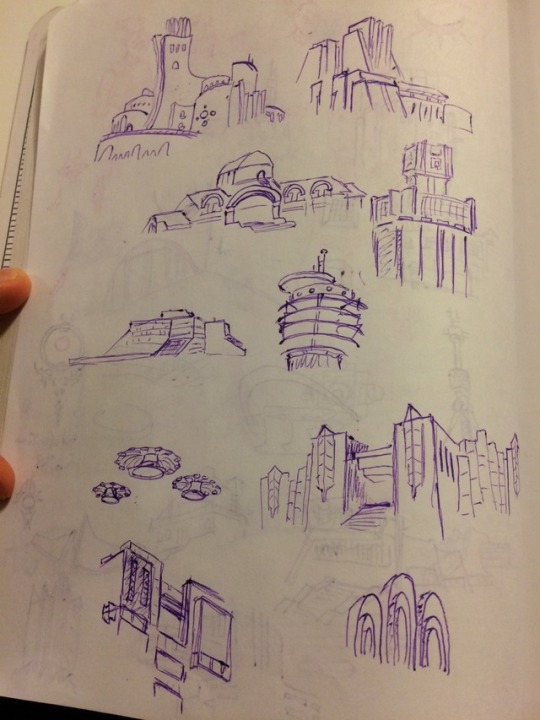
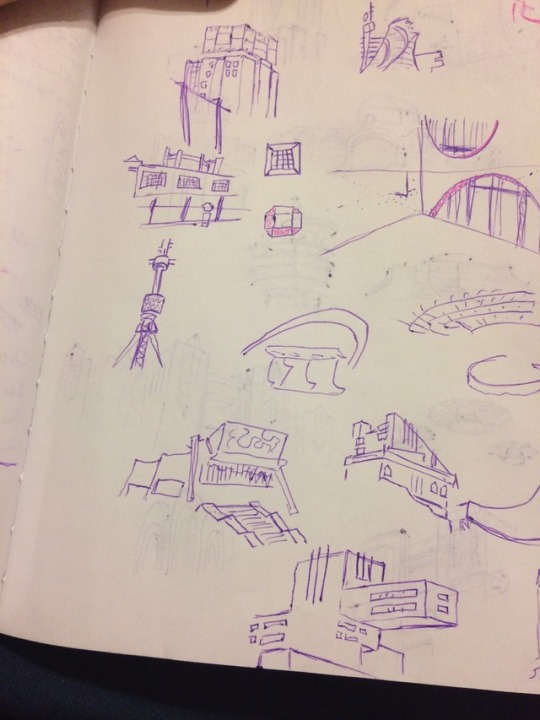
At the library I found a fantastic book of Soviet Futurist architecture, CCCP: Cosmic Communist Constructions Photographed, by Frédéric Chaubin, and spent a while doing thumbnail sketches of the standouts
I think I might do some more detailed architecture/color studies soon (possibly on Patreon?)
153 notes
·
View notes
Text
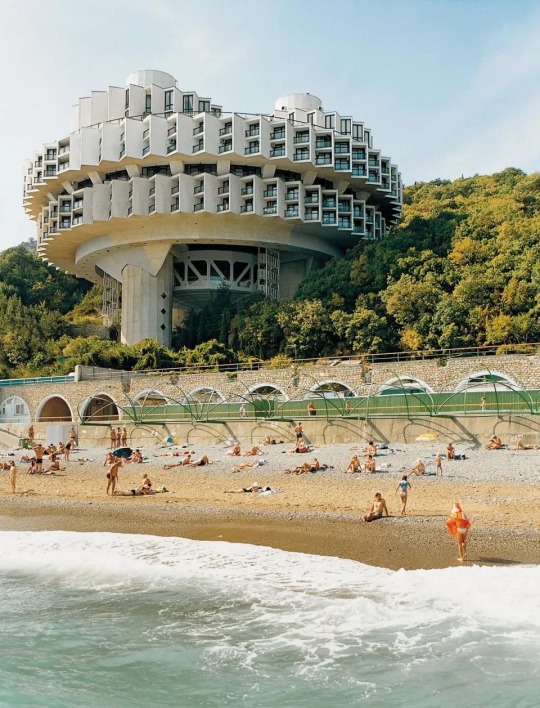
Druzhba Sanatorium, Yalta, Ukraine 📸 Frédéric Chaubin. See more: themindcircle.com/soviet-architecture/
0 notes




